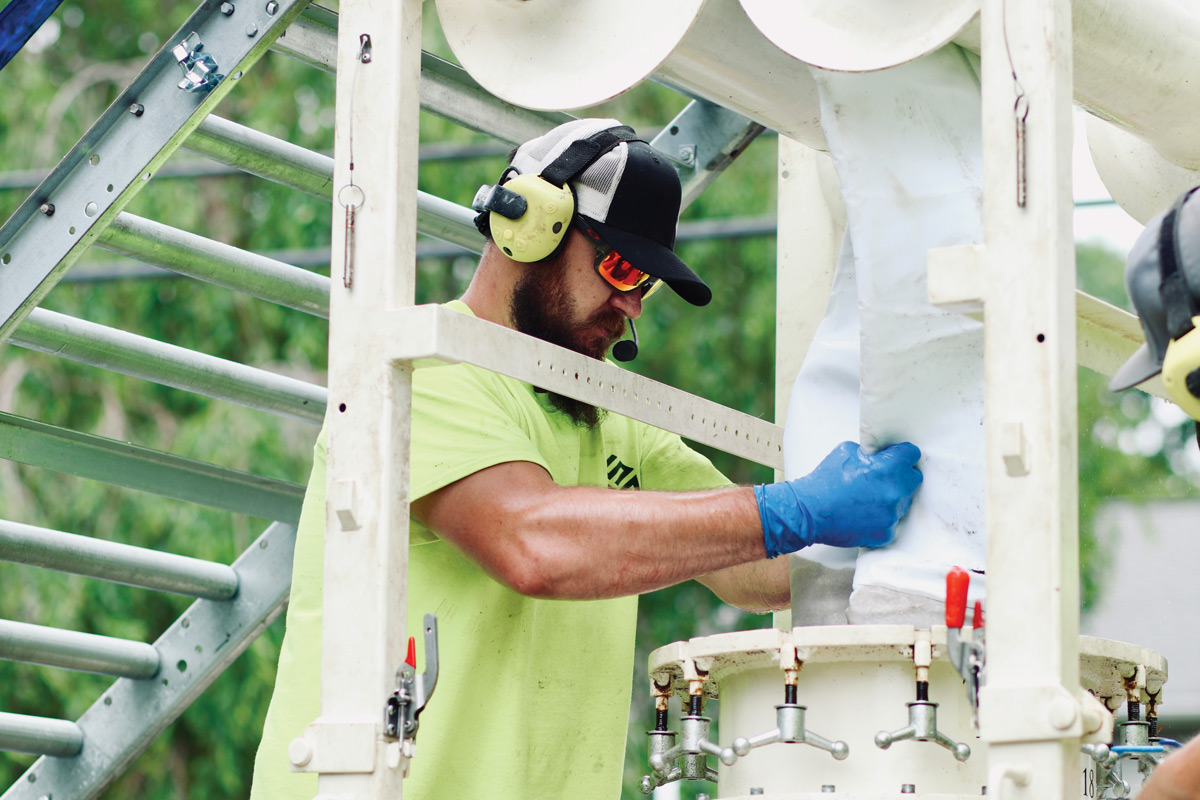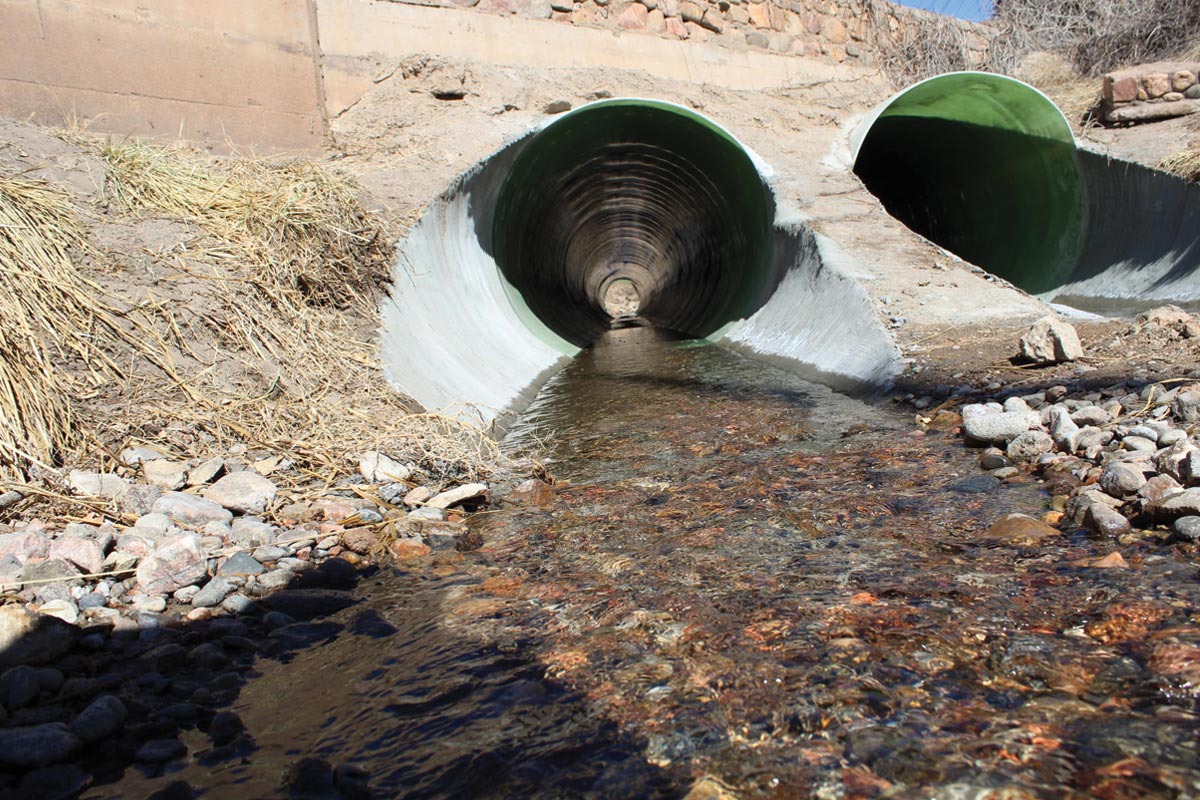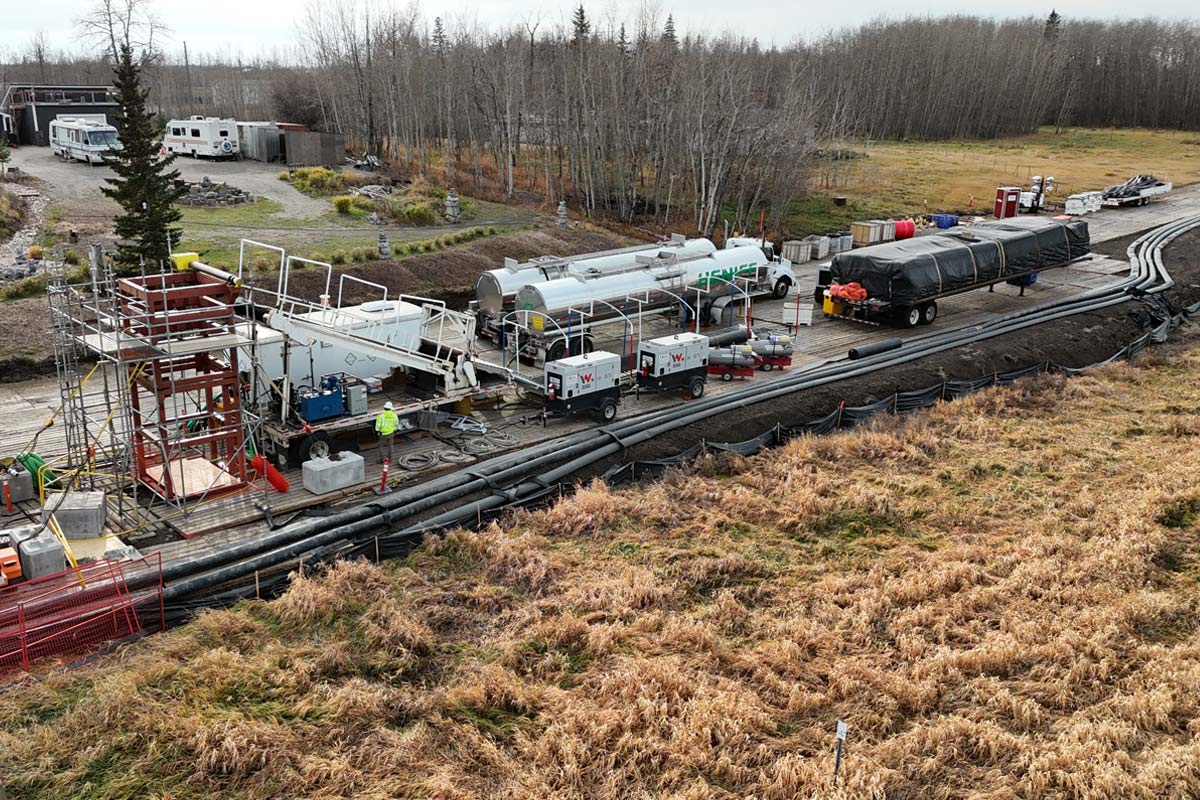2007 Project of the Year Rehabilitation Winner
October 19, 2007
You couldn’t ask for more in a project of the year nominee: two 4,000-ft cured-in-place pipe projects involving 60-in., cast iron pressure pipe (one in an historic location), with extreme weather, intricate curves and bends and tight deadlines. How the Milwaukee Metropolitan Sewerage District (MMSD) tackled this extensive project earned it the distinction of being named the Trenchless Technology Project of the Year for Rehabilitation. Through the use of cured-in-place pipe (CIPP) relining, MMSD was able to reline more than 8,000 ft of pressure pipe over the course of two projects, saving the taxpayers in the higher cost of replacement or the difficult possible repair of a pipe failure.
“It definitely wasn’t a typical project for us,” says Kelly Odell, vice president of Michels Pipe Services, which handled the relining work. “The size and length was pretty unusual and Michels had never attempted anything like this before. With the acquisition of [cured-in-place pipe business] Gelco Services a few years back, came technical expertise and we felt we could tackle a project of this magnitude. In the end, we were successful.”
 The length of the CIPP runs, which included difficult bends and curves, as well as successfully overcoming incredible obstacles, made this a learning experience for everyone involved — from the sewerage district to the contractor. “What we learned from this experience, along with Michels, is that you can go a great distance even with a bend in place,î says Larry Ellis, senior project manager at the MMSD of the CIPP projects. “I don’t know nationwide what the record is but a 5-ft diameter bag that went around a 30-degree bend plus had a little S-curve in it — and to do 2,000 ft in one run — I have to believe that it’s at least a Wisconsin record. That was just phenomenal.”
The length of the CIPP runs, which included difficult bends and curves, as well as successfully overcoming incredible obstacles, made this a learning experience for everyone involved — from the sewerage district to the contractor. “What we learned from this experience, along with Michels, is that you can go a great distance even with a bend in place,î says Larry Ellis, senior project manager at the MMSD of the CIPP projects. “I don’t know nationwide what the record is but a 5-ft diameter bag that went around a 30-degree bend plus had a little S-curve in it — and to do 2,000 ft in one run — I have to believe that it’s at least a Wisconsin record. That was just phenomenal.”History
MMSD is responsible for providing sewage services to the City of Milwaukee and most of Milwaukee County. Wastewater from 28 local sewer systems flows into the district’s system of collector sewers before it is treated or temporarily stored in 19.4 miles of tunnels at depths of up to 325 ft. Completed in 1993, this tunnel system holds 405 million gal of wastewater until it can be run through the treatment plants. The tunnel system was designed to comply with federal water quality standards by reducing the amount of untreated sewage that is discharged into local waterways, such as Lake Michigan, the city’s source for drinking water.
In 2003, it was discovered that some 14,000 ft of the pressure sewers needed to be replaced or rehabilitated. A bid to replace the entire 14,000 ft of pipe was rejected due to cost and project location. This led to the decision to reline 10,000 ft of pipe and to replace the other 4,000 ft in the tunnel. The $12 million sewer rehabilitation project was spread out over three years. The first project, an interceptor sewer, was conducted in 2005.
 The following year, the second project involving a stacked configuration began; CIPP was utilized here. A 60-in. circular cast iron pressure sewer was located above a 49-in. by 72-in. rectangular concrete box sewer gravity conduit. This arrangement created challenges in accessing the pipes and was located in Milwaukee’s historic Third Ward, a affluent urban area.
The following year, the second project involving a stacked configuration began; CIPP was utilized here. A 60-in. circular cast iron pressure sewer was located above a 49-in. by 72-in. rectangular concrete box sewer gravity conduit. This arrangement created challenges in accessing the pipes and was located in Milwaukee’s historic Third Ward, a affluent urban area. While no obvious defects existed in the pipe, the cast iron was degrading and its wall thickness was eroding. Michels Pipe Services, a certified installer of the Premier-Pipe USA CIPP process for sewer mains, was awarded the project. This relining project, done during July 2006, involved approximately 4,000 ft and was completed in three CIPP runs.
The third project began in November 2006 and involved a circular cast iron, 60-in. diameter pressure pipe was also located in the Third Ward. Because the area was designated ‘historic,’ the contractors had to adhere to stringent rules, such as a moratorium on digging freshly paved streets and keeping streets open to traffic when working. There was limited access to the work area and disruption to the area businesses was not permitted.
“We — the contractor, MMSD and the design engineer — worked closely with the Third Ward Businessman’s Association. They were brought into the project pretty early on and were kept informed. Due to the number of festivals and other activities, there were some work stoppages but we all cooperated and worked together,” explains Patrick Murray, project administrator of the joint venture, which was comprised of Earth Tech and MWH, in association with Kapur & Associates.
“In choosing CIPP to reline the pressure pipe, many factors came into play, with a key one being flow capacity. We originally thought we could do this cheaper by sliplining it with HDPE but there would have been a reduction in the flow capacity, so it was ruled out as an option,” Ellis says. “Over the years, we have done thousands of feet of CIPP in other projects in this area so we were very comfortable with this choice of rehabilitation.”
Michels Pipe Services again handled the CIPP installation, relining nearly 4,000 lf of pipe via two approximately 2,000-ft runs. This project also had a tight six-month window for completion.
Once the decision was made on the method of rehabilitation, Michels placed an order for the felt liner from Applied Felts. For the project, a liner composed of seven layers of felt and was 1.5 in. thick.
Michels Pipe Services used the Premier-Pipe water inversion method for CIPP rehabilitation. The basic process begins by taking the lead end of the Applied Felts resin-saturated liner and turning it inside out for a pre-determined length and clamping it to a collar over the manhole. Water is then introduced into the turned back section creating a head, which causes the lining to continue turning inside out along the defective pipe. The constant addition of water maintains the inversion head, inverting the liner and ensuring it is held firmly against the host pipe. When the installation is complete, the water in the liner is circulated through a mobile hot water boiler to gradually raise the water temperature to achieve a controlled cure of the resin. When the cure is complete, the end of the newly formed pipe is cut and trimmed.
The first run was the longest and most difficult — nearly 2,000 ft with a 30-degree bend. The team began in the early morning hours of Feb. 13, working 24 hours a day in 12-hour shifts. The liner finally reached its destination inside the pipe five days later. The team then used the hot water curing method to secure the liner.
The second run was almost as long as the first and included a 90-degree bend. Michels handled the bend effectively by starting higher in the air to generate a bigger column of water during the inversion.
Overcoming Obstacles
This project posed a number of challenges for the design team and contractor, including gaining access to the pipe. Because the pipe was a pressure pipe, there weren’t any manholes. As such, three shafts were made in the ground to access the pipe — a lesson learned from the first CIPP project earlier that summer when access manholes had to be installed. Additionally, 20 to 30 million gal of sewage per day was diverted to the tunnel system, which eliminated the need to establish bypass pumping.
“Other difficulties were the S-curves and 90-degree bends in the pipe. An epoxy coating was applied to the raw edges and the top and sides of the S-curves prior to relining. With the bends, we applied epoxy prior to going around them so we wouldn’t create any kind of void behind the cured-in-place pipe,” Odell says. “We didn’t want to take the risk of reintroducing pressure to the pipe if there was a void behind it; this would have created a chance of fracturing the pipe.”
Next, Michels constructed a much bigger tower than under normal project conditions. In this case, a 20-ft tower was built above the shaft to ensure the liner would correctly enter the existing pipe. This tower was needed to effectively force the liner into the existing pipe.
Cold Milwaukee winters are hardly unusual but temperatures hit record lows during the course of this project. Crews worked while temperatures dropped to 15 F below zero, with a wind chill of 50 F below zero. Trucks and other equipment often rolled to the worksite covered in ice; concern about keeping the resin in the tankers warm was a top priority.
When resin is too cold, it thickens, making it difficult to pump into the felt bag. With constant freezing temperatures and cold resin, Michels ordered a ground thawing unit to heat the truck with the resin, bringing the resin up to 65 F and enabling it to easily flow into the felt liner.
“The Michels team worked long hours to prepare and install the liner correctly. Special precautions were taken for the crewmembers. We rotated our manpower from people who were inside outside,” Odell says. “They were not allowed to work longer than two-hour shifts on the outside.”
Those involved with the project are more than pleased with the results and the lessons learned for future projects. They also cite the cooperation and teamwork displayed by the city, district, contractor and residents as critical to the project’s success.
Sharon M. Bueno is managing editor of Trenchless Technology. Article written with material from Michele Brier, a freelance writer who writes about the trenchless industry.




